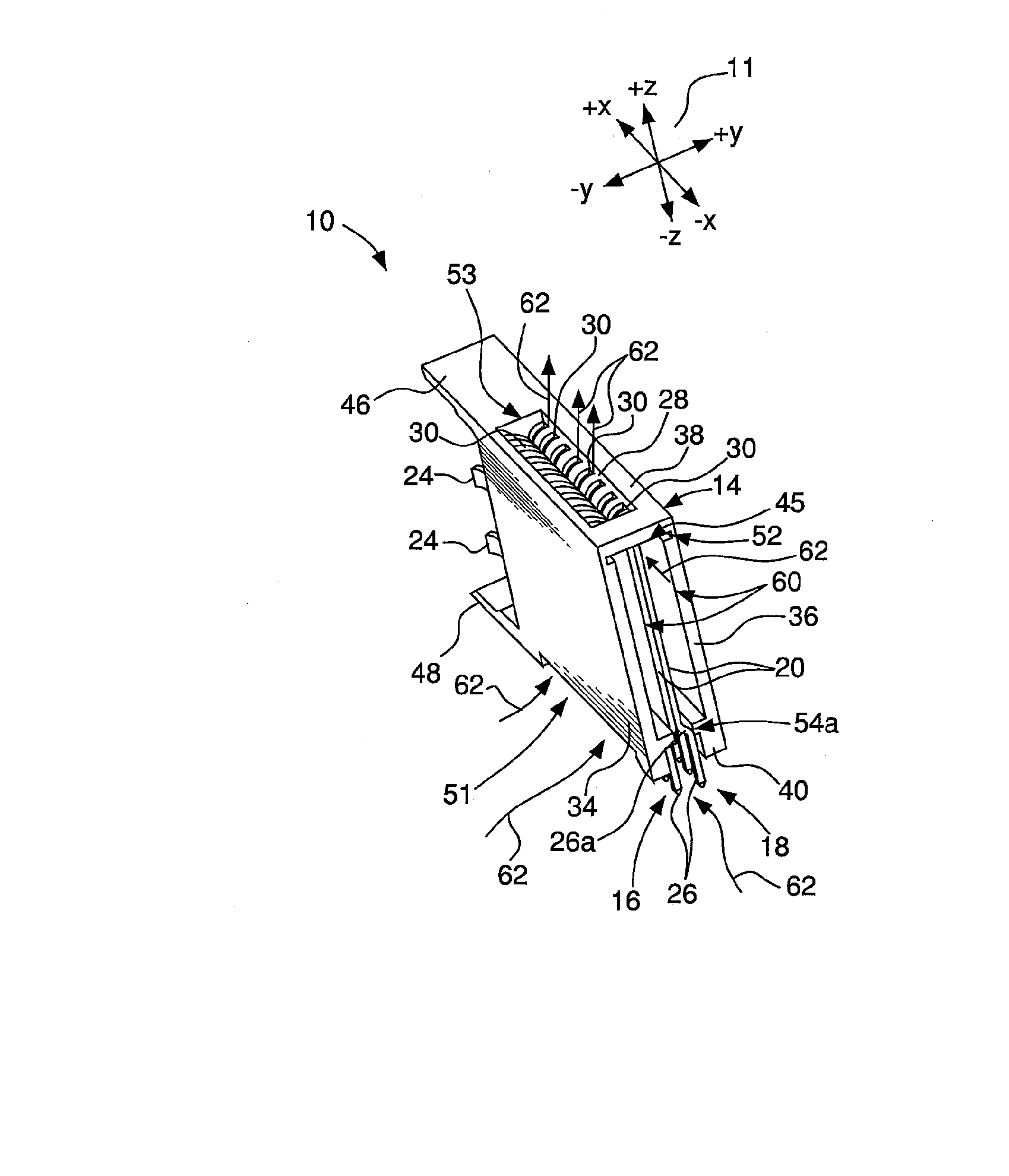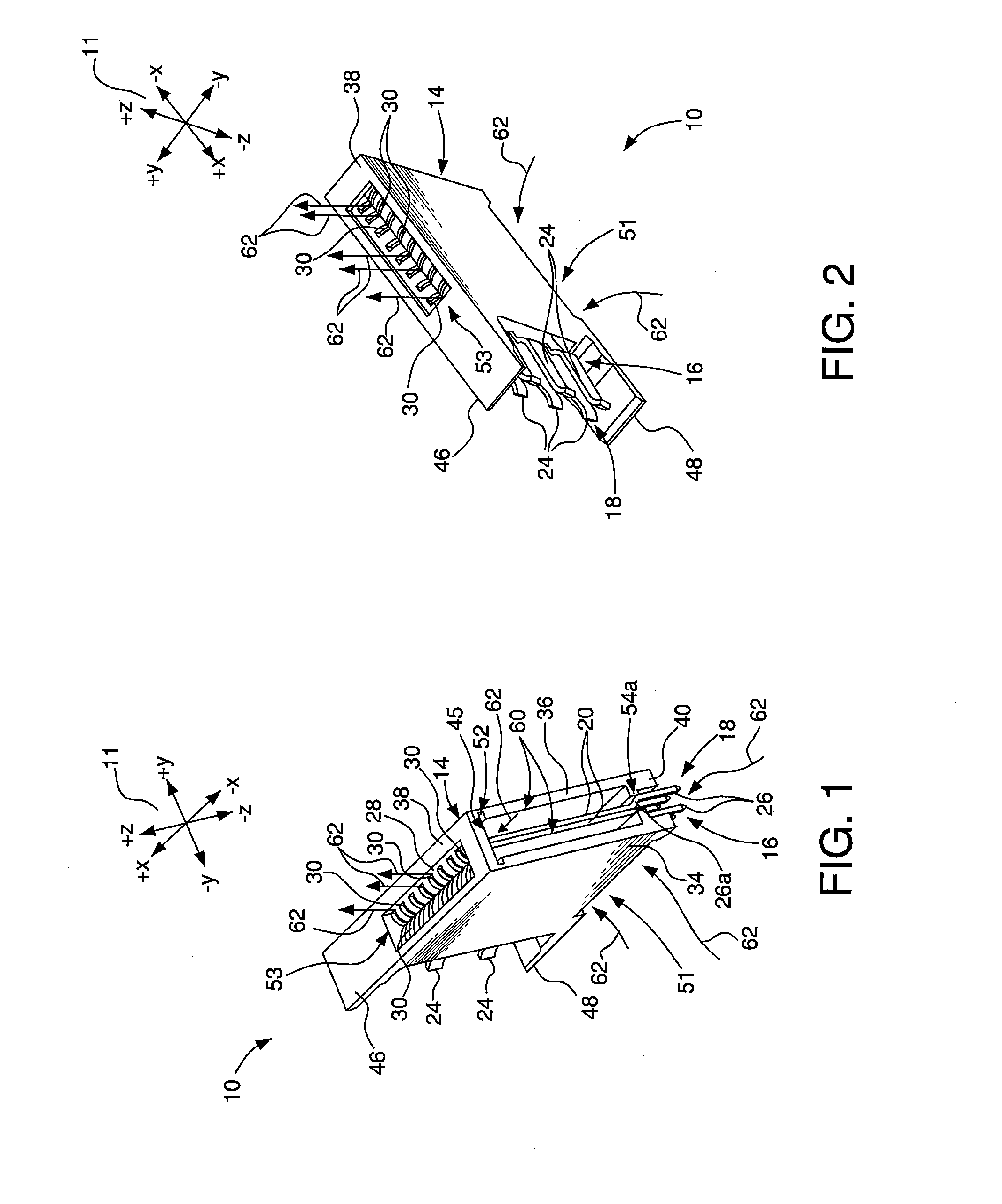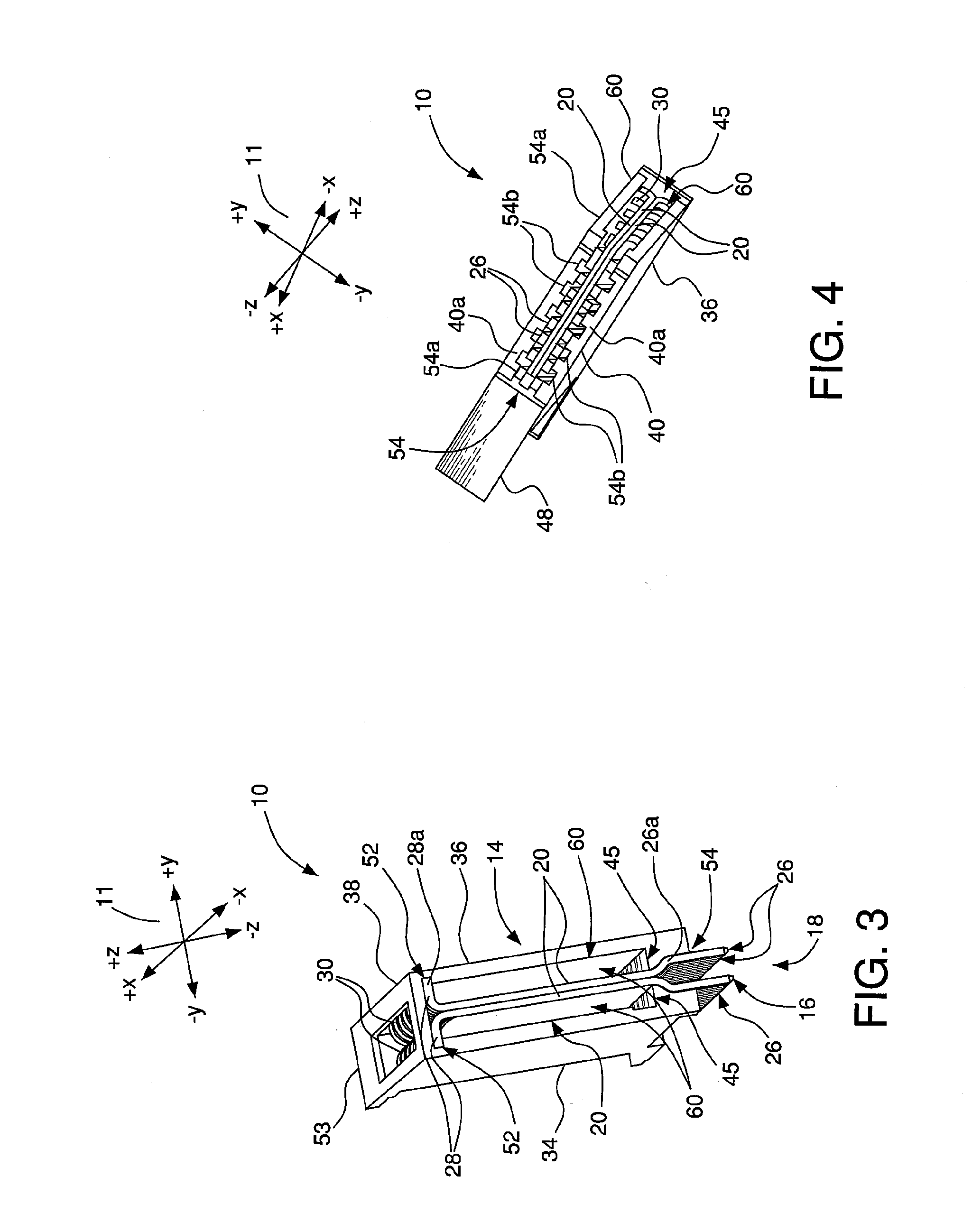Electrical connector with air-circulation features
a technology of air circulation and electric connectors, applied in the direction of photomechanical equipment, coupling device connections, instruments, etc., can solve the problems of reducing the reliability and service life of the connector, limiting the amount of power that can be transmitted through the connector, and increasing the overall footprint of the connector
- Summary
- Abstract
- Description
- Claims
- Application Information
AI Technical Summary
Benefits of technology
Problems solved by technology
Method used
Image
Examples
Embodiment Construction
[0020] FIGS. 1 to 5 depict a preferred embodiment of an electrical connector 10. The FIGs. are each referenced to a common coordinate system 11. Directional terms such as “top,” bottom,”“vertical,” horizontal,”“above,”“below,” etc., are used herein with reference to the component orientations depicted in FIG. 5. These terms are used for exemplary purposes only, and are not intended to limit the scope of the appended claims.
[0021] The connector 10 can be mounted on a substrate 12, as depicted in FIG. 5. The connector 10 comprises a housing 14. The connector 10 also comprises a first conductor 16 and a second conductor 18 mounted in the housing 14.
[0022] The first conductor 16 and the second conductor 18 are substantially identical, with the exception that the first and second conductors 16, 18 are configured in a left and right hand configuration. In other words, the first and second conductors 16, 18 are symmetrically disposed about a vertically-oriented plane passing through the ...
PUM
 Login to View More
Login to View More Abstract
Description
Claims
Application Information
 Login to View More
Login to View More - R&D
- Intellectual Property
- Life Sciences
- Materials
- Tech Scout
- Unparalleled Data Quality
- Higher Quality Content
- 60% Fewer Hallucinations
Browse by: Latest US Patents, China's latest patents, Technical Efficacy Thesaurus, Application Domain, Technology Topic, Popular Technical Reports.
© 2025 PatSnap. All rights reserved.Legal|Privacy policy|Modern Slavery Act Transparency Statement|Sitemap|About US| Contact US: help@patsnap.com



